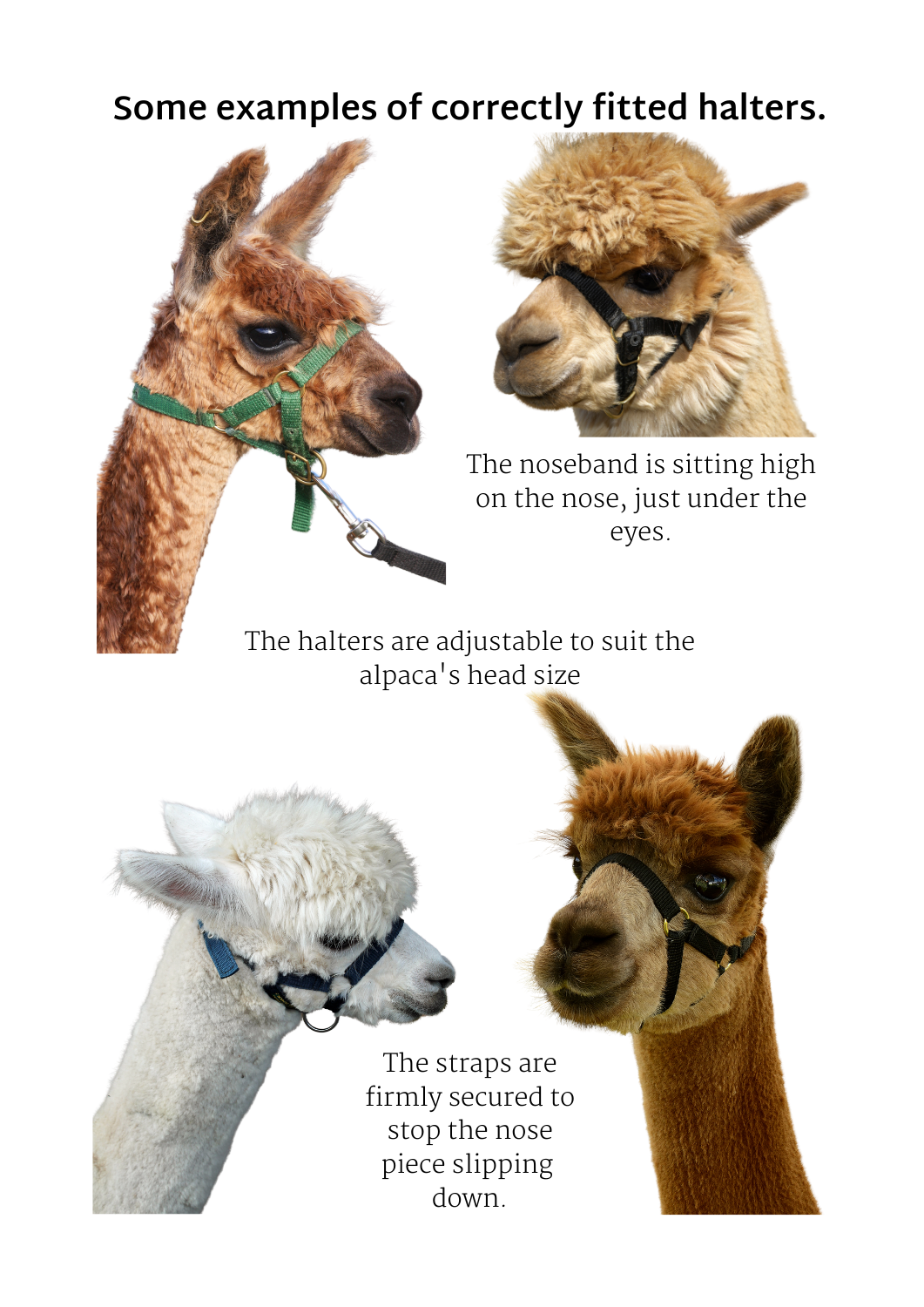Handling Cria at an Early Age
By Trudi Arnold, Judge
When it comes to handling alpacas, it is better if they will accept understand what we want, and to develop confidence and trust in us. to halter train at a young age.
You should never intervene between a mother and cria during the birth process or for several hours afterwards, as this time is important for the bonding process and for the establishment of successful feeding [unless necessary]. However, you can start handling on the day of birth, but only do so if all is going well and mum and cria have established a correct relationship.
It is important to never chase or pounce on the cria in the paddock, but have your arms out stretched and catch in the corner of a small paddock with gates if necessary. It is ideal to shake a feed bucket and quietly walk your dams and cria walk up to a yard area, they will soon get used to having their daily ration, while weighing and handling the cria.
For the first few days spend time handling the whole body, from head to toe by rubbing each area for 20 seconds. Make sure the cria is not leaning on you, and keep touching the same areas that they feel jumpy or uncomfortable until they relax. (In an older animal that kicks, you can use a cloth or long stick firmly against the back legs). Continue this for a few days until you are satisfied the cria stands well and then decrease the times handled depending on the acceptance of the cria. It is vitally important that every time you release the cria, for the cria to be standing as relaxed as possible before releasing, and walk off quietly. It is very beneficial to use this method throughout adulthood.
It is most important for us not to bond with the cria by looking in their eyes and treating like a cuddly teddy bear, even though it is very tempting at times. If bonding develops between you and the cria, they can start to regard you as their own kind and treat you as such. When reaching maturity they could exhibit behavior such as pushing, spitting, and even chest butting. We don’t want our males thinking they can boss us around. This may surprise some of you, but be aware that the animals that walk up to you in the paddock and are born extremely friendly are more likely to develop this behavior if encouraged. You can lightly flick the nostril just enough to discourage this behavior progressing.
If the cria is skittish and if the dam is not a quiet animal herself, you may wish to intensify the handling process to prevent this characteristic from being perpetuated into the offspring. In the paddock, and by having the dam on the other side of the fence to watch, the handler can sit on the ground with the cria lying on its side on the ground. To keep the cria from getting up at any stage, one leg over the neck and at times hand on the rump when they kick is sufficient. The cria’s body is divided into sections and handled in one area at a time. Each part is gently but firmly massaged to the count of 20, if during the count the cria starts to struggle, the count starts again from one on the same section of body. Once one side of the body is completed the cria is turned over and repeated on the other side. In some cases the cria becomes very relaxed and may even stay in the same position, until they realize you have gone. Repeat this for the first three days; sometimes it may be necessary to continue every other day until the cria relaxes.
Although I do not physically do anything to the dam, it seems in many cases to improve her behaviour too, as she learns to trust with her cria. Most dams are concerned initially, but soon realise no harm is being done to their cria and start to graze happily nearby.
Training to lead can start from 3-4 weeks onwards, as long as you have a correct fitting cria halter. Separate in the yards and then leave the dam in the paddock, this time also helps the cria to develop more independence, which is beneficial when weaning or showing at a young age. However, always have another animal nearby in a pen, without being able to interfere, as it could get tangled in the lead. It is most preferable to train with another cria.
Be aware that any habits learned at this time will be with your alpaca for the rest of his life!


